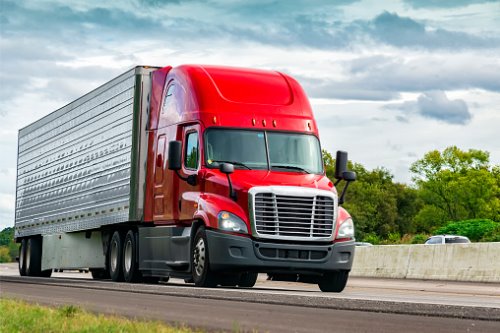

Trucking generates more than $700 billion in annual revenue in the United States and is responsible for transporting nearly 70% of the nation’s freight annually. For many years, trucking was the lifeblood of US trade, but the glory days have come to an end. The industry is now facing a potentially life-threatening clot in the form of insurance costs that have risen so high, they’ve rammed some trucking firms off the road.
Insurance rates in the trucking sector have been increasing for several years. It is a gear-shift reaction by insurance carriers in response to years of unprofitable results, not just in trucking but in the wider commercial auto insurance market. There are several factors driving these challenging market conditions. In a nutshell, the severity of commercial auto claims has reached unprecedented levels due to increased medical costs, increased repair costs for vehicles (a problem exacerbated by in-vehicle technology), and an astronomical increase in litigation.
This boom in litigation, arguably the primary accelerator in claims costs, is often branded with the term ‘social inflation’ – a buzzword used by insurers to describe the rising costs of insurance claims resulting from things like nuclear court verdicts, broader definitions of liability, more plaintiff-friendly legal decisions, and larger compensatory jury awards.
“Claimants and attorneys have really become empowered to take more cases to trial due to the routine publication of nuclear verdicts. In recent years, we have seen courts and juries willing to hand down judgments that have far exceeded anything we have seen in the past,” said John Woods, Vice President, National Practice Group Leader, Transportation, Burns & Wilcox. “It has reached the point where these nuclear verdicts are not even necessarily based on the facts of the loss, but more so focused on damages or injuries, or even just a desire to punish a company for what the jury believes is bad behavior.”
When a large truck is involved in a collision, the likelihood of an involved party sustaining a bodily injury is high. Even if the collision was in fact a total accident, with no negligence on behalf of the truck driver, that trucking firm could still be taken to court and sued for everything it’s worth. That’s the harsh reality that trucking operators and their insurance partners are facing today.
“Mitigating this risk requires a multi-tiered approach,” Woods told Insurance Business. “Insurance carriers and brokers must continue to educate transportation operators so that they understand the best way to minimize these types of claims is to continue to place an emphasis on safety. That might involve improving their SMS scores, focusing on recruiting top quality drivers, and investing in new technology like in-cab cameras and collision avoidance systems. While these things come with a cost, the downstream benefits can be significant.”
On December 17, 2019, the Commercial Vehicle Safety Alliance started fully enforcing its electronic-logging-device (ELD) mandate for truckers nationwide. The mandate was introduced to improve safety by ensuring truckers don’t drive for more than 11 hours a day and they take regular breaks. Despite some pushback from truck drivers, who claim the ELD mandate has cut their potential earnings, this type of telematic technology can have a positive effect on the industry, according to Woods.
“Beyond monitoring hours of service, ELDs allow for the operators of trucking companies to track vehicles, monitor speeds, and identify the best routes for their trucks to travel so they can improve efficiency,” he explained. “The whole idea is to increase visibility into what is going on and to reduce costs in an industry where the margins today are already incredibly thin. From that perspective, telematics and ELDs can have a substantial impact on the financial side.”
Woods is also convinced by the benefits of in-cab cameras in mitigating the severity of potential liability claims. Whether forward-facing or rear-facing, in-cab cameras can capture events before, during, and after they occur, and thus can help to identify the true story of a claim. They eliminate the ‘He said, she said,’ aspect of claims, and can help insurance companies quickly get to the root cause of an accident and decide how they want to adjust the claim.
“The cameras that are rear-facing can show exactly what a driver was doing before, during, and after an incident,” Woods added. “The footage may show the driver was doing everything perfectly, but if they were at fault, trucking operators can use that footage to counsel and train the driver. Oftentimes, in the past, if a driver got in a serious incident, they were fired. But there’s such a severe driver shortage today that transportation operators want to do everything they can to continually train their drivers in order to retain them. So that’s one of the added benefits of a rear-facing camera.
“In the past few years, we have seen a lot more willingness among trucking operators to have discussions about in-vehicle technology. They are all looking for ways to control costs, including their insurance premiums, and technology can help them to do that. That said, there is a cost to this technology, and that cost can sometimes be significant, particularly for larger fleets that are operating hundreds of vehicles. But as time goes on, I think most trucking operators will understand that while the cost of mitigation might be great, the future benefit is worth it.”
With a substantial existing footprint in the transportation binding and MGA space, Burns & Wilcox is now committing significant resources to building out a more robust nationwide commercial transportation vertical, by adding additional expertise and additional insurance markets - all with a focus on providing additional solutions for larger and more complex trucking risks.
